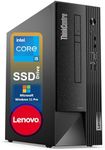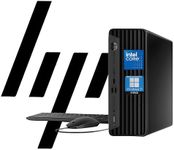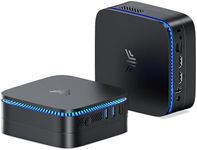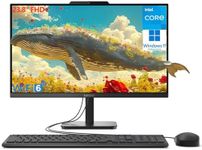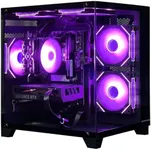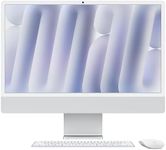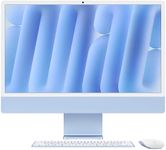Buying Guide for the Best Business Desktop Computer
Choosing the right business desktop computer is crucial for ensuring productivity and efficiency in your work environment. The right computer can help you run your business applications smoothly, manage multiple tasks, and store important data securely. When selecting a business desktop, consider the specific needs of your business, such as the type of software you use, the amount of data you handle, and the number of users. Here are some key specifications to consider when choosing a business desktop computer.Processor (CPU)The processor, or CPU, is the brain of the computer. It determines how fast and efficiently your computer can run applications and perform tasks. For business use, a multi-core processor is recommended. Entry-level processors like dual-core are suitable for basic tasks such as word processing and web browsing. Mid-range processors, such as quad-core, are ideal for multitasking and running more demanding applications. High-end processors with six or more cores are best for intensive tasks like video editing, large data analysis, and running multiple virtual machines. Choose a processor based on the complexity and volume of tasks your business handles.
Memory (RAM)RAM, or Random Access Memory, is where your computer stores data that is actively being used or processed. More RAM allows your computer to handle more tasks simultaneously and improves overall performance. For basic business tasks, 8GB of RAM is usually sufficient. For more demanding applications and multitasking, 16GB is recommended. If your business involves heavy data processing, graphic design, or running virtual machines, consider 32GB or more. Assess the typical workload and software requirements of your business to determine the appropriate amount of RAM.
StorageStorage refers to where your computer saves all its data, files, and applications. There are two main types of storage: Hard Disk Drives (HDD) and Solid State Drives (SSD). HDDs offer larger storage capacities at a lower cost, making them suitable for storing large amounts of data. SSDs, on the other hand, are faster and more reliable, which can significantly improve your computer's performance. For business use, a combination of both (a smaller SSD for the operating system and frequently used applications, and a larger HDD for data storage) is often ideal. Consider the amount of data your business generates and stores when choosing storage options.
Graphics Card (GPU)The graphics card, or GPU, handles rendering images, videos, and animations. For most business tasks, an integrated graphics card (built into the CPU) is sufficient. However, if your business involves graphic design, video editing, or 3D modeling, a dedicated graphics card with more processing power is necessary. Entry-level GPUs are suitable for basic graphic tasks, mid-range GPUs can handle more complex designs and video editing, and high-end GPUs are needed for intensive 3D rendering and large-scale video production. Choose a GPU based on the graphic demands of your business applications.
Ports and ConnectivityPorts and connectivity options determine how you can connect peripherals and other devices to your computer. Common ports include USB, HDMI, DisplayPort, and Ethernet. Ensure the desktop has enough USB ports for your peripherals like keyboard, mouse, and external drives. HDMI and DisplayPort are important for connecting monitors. Ethernet ports provide reliable wired internet connections, which are often more stable than Wi-Fi. Consider the types and number of devices you need to connect to ensure the desktop has adequate and appropriate ports.
Operating SystemThe operating system (OS) is the software that manages all the hardware and software on your computer. The most common OS for business desktops are Windows, macOS, and Linux. Windows is widely used and compatible with most business software. macOS is preferred for its seamless integration with other Apple products and is popular in creative industries. Linux is an open-source OS that offers flexibility and is often used in technical and development environments. Choose an OS that is compatible with your business applications and preferred by your team.
Form FactorThe form factor refers to the size and shape of the desktop computer. Common form factors include tower, mini-tower, and all-in-one. Tower desktops offer the most flexibility for upgrades and expansion, making them suitable for businesses that may need to upgrade components over time. Mini-towers are more compact and save space, ideal for smaller offices. All-in-one desktops integrate the monitor and computer into a single unit, reducing clutter and saving space. Consider the available space in your office and the need for future upgrades when choosing a form factor.

